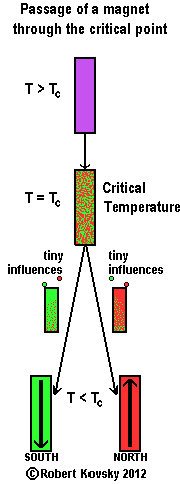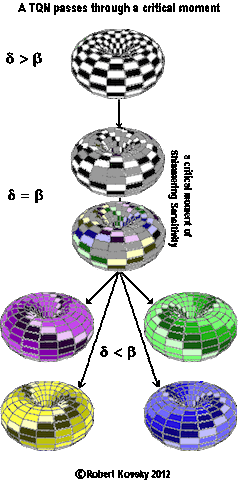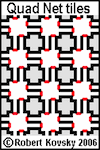 |  |  |
(...) Approaching freedom is available for download [.pdf file, 1.2 MB].
An example of a psychological choice is selecting and buying one particular snack in a food market that sells many different snacks. Another example occurs in a ping pong game when a player, who has a repertoire of strokes, picks one particular stoke to execute and try to strike an incoming ball. I call these examples "psychological" because they involve feelings such as taste, appetite and confidence. During such an exercise of freedom, multiple possible movements change into a single actual movement.
I suggest that there is a general form of contest. At the beginning of a contest, there are multiple possible winners while at the end of the contest there is one actual winner and one or more losers. In athletic contests, there is a period of competition during which the result is uncertain; and the lead may shift back and forth. In the food market, different snacks compete for the customer's favor. Which contestant becomes the winner depends on many influential factors. In the food market, snack packages have bright colors and evoke feelings such as nostalgia. In an athletic contest, influential factors may include bodily capacities, training, personal efforts and cheers from the sidelines.
I suggest that a form for such choices or contests is the critical selection process that is embodied in physics paradigms shown below.
In the dynamical selection process, a bowl changes over time, first concave upward and holding a ball stable, then flattening out until, at a critical moment, the ball acquires momentum in one direction or the other according to opposing selective influences. (Both possibilities are shown in the image.) This is a mechanical process.
In the magnetic critical point process a hot unpolarized magnet acquires a North or South polarity as it cools through the critical point according to the strength of tiny competing magnetic influcences. This is a material process.
There is also a mathematical process that is based on the Ising model of statistical physics.
 |  |  |
| I abstract mathematical, material and momentum features from critical selection processes and construct a new process that is based in Quad Nets, a proposed new technology. A Quad Net (or quadnet) is a network of elemental devices with four-fold interconnections, as in the adjacent image. Each elemental device discharges pulses onto other elemental devices and can also be connected to elemental devices in other quadnets or, more generally, to a variety of control modules. The purpose of such devices is to drive movers (force devices) in engineered organisms, whose movements resemble movements of animal bodies that are produced by muscles and nervous systems. Quad Net devices operate according to principles of energy conversion rather than principles of computation, as in robotic systems. |  |
In a paradigm of choice shown above, a Toroidal Quad Net (TQN) goes through a critical moment of Shimmering Sensitivity. Before the process starts, at the the top of the image, the TQN is in a steady condition of alternating pulsations called "checkerboarding." After the process is over, at the bottom of the image, the TQN is carrying a wave of pulsations, called a "wave," that has a particular direction. Checkerboarding has no direction.
In the central part of the TQN critical selection process, a condition of Shimmering Sensitivity occupies the TQN, consisting of competing fragments of waves. Which wave fragments become the final wave pattern can depend on many tiny influences.
The TQN critical selection process is driven by changing values of β and δ, which are timing intervals. Changes in the Quad Net model are changes in timing and movements instead of changes in space and positions that occur in standard physics paradigms. Processing of movements and signals in the Quad Net model resembles the making of music more than computations.
(...) Approaching freedom is available for download [.pdf file, 1.2 MB].
Introduction: This approach to freedom is guided by psychological investigations of Jean Piaget.
Overview. Four preparatory steps lead to quadnets.first preparatory step: dynamical selection in a gravitational field
second preparatory step: a magnet passes through its critical temperature
third preparatory step: natural science of critical point phase changes
fourth preparatory step: the mathematical Ising model of a critical point
(...) Approaching freedom is available for download [.pdf file, 1.2 MB].
October 2018